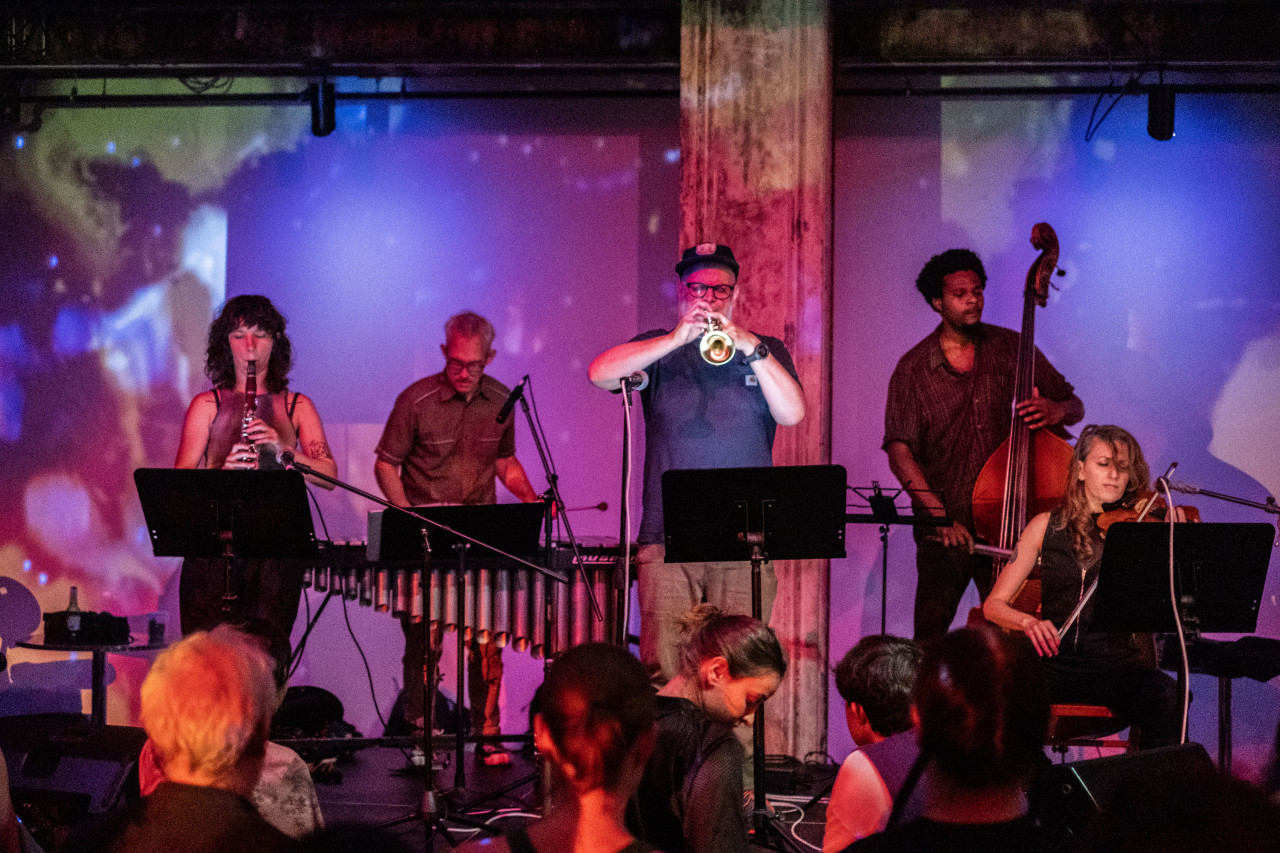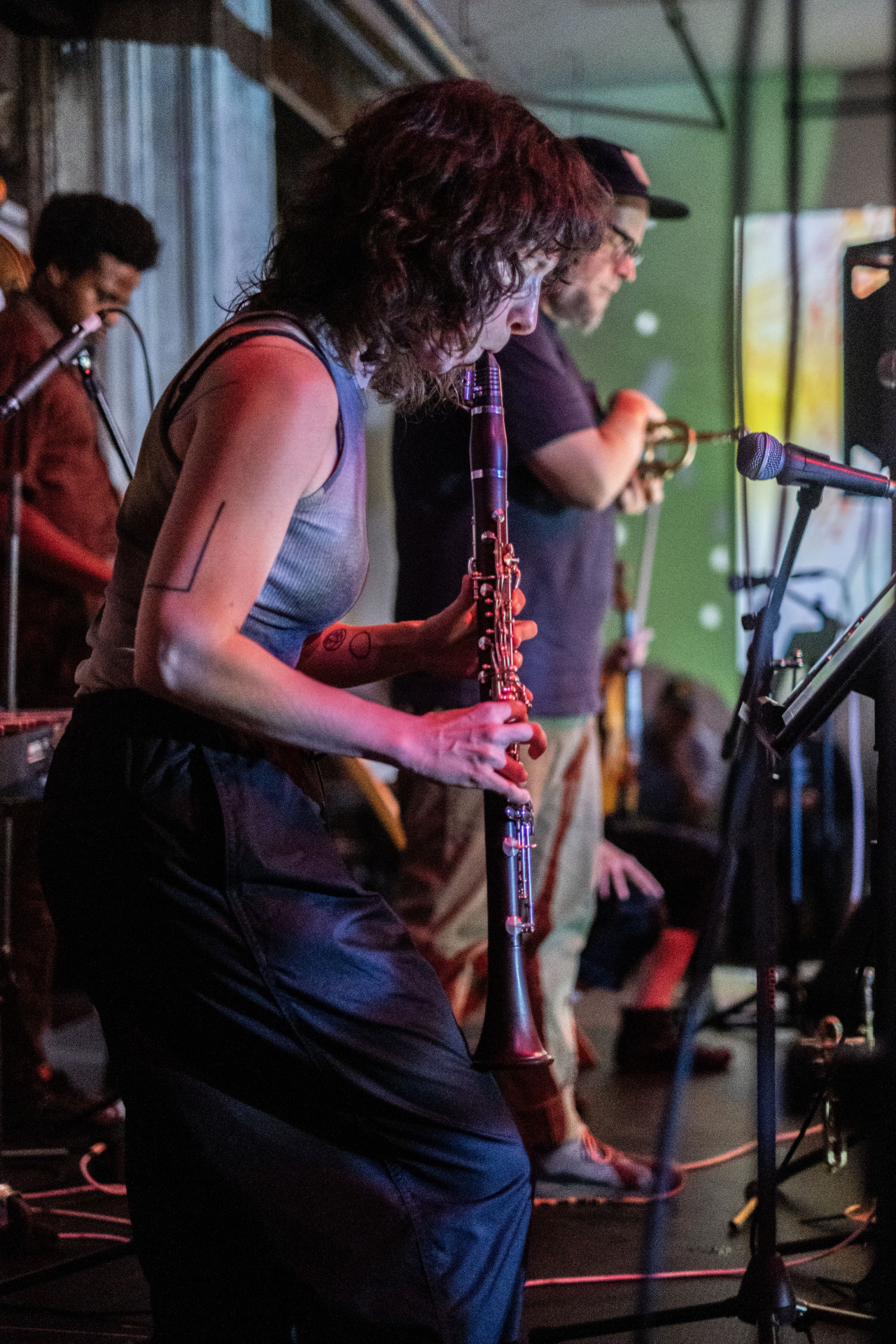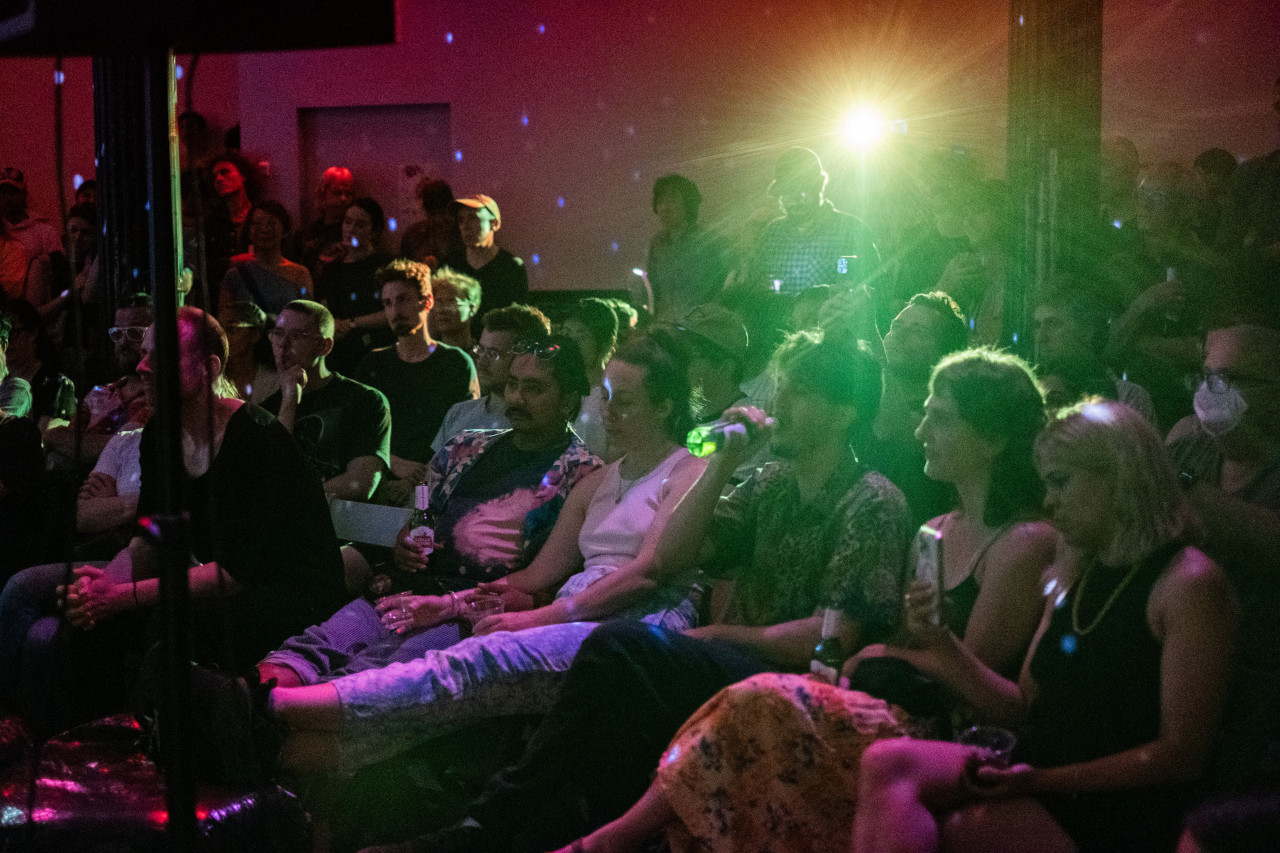Numerous practices make up the electro-acoustic sound collages created by S*Glass. He combines tape music, electronic processing, voice, found sound, and chance operations. Every show uses a different batch of curated audio, mixed live, while the self-produced studio albums are more refined assemblages. The playing of non-musical objects is sometimes incorporated (dental floss, aluminum foil, wind-up toys, metal lunch box, cabbage). Self-shot video is screened during sets, which is mostly textures made with multiple layers that slowly wobble out of sync, jump cuts, and a smattering of primitive animation. The overall effect is one of surreal disorientation.
S*Glass is a founder of Bren’t Lewiis Ensemble (a large non-musical music group begun in the early 1980s), and Glands of External Secretion (a duo with rock musician Barbara Manning since the early ’90s). From the late ’80s until 2004, he was the main driver behind Bananafish. Since 2017, he’s performed as a solo artist and completed U.S. tours of the West Coast, New England, part of the South and Midwest, England and Scotland, a handful of places in Canada. This past October he toured Australia and New Zealand for three weeks; coming up in April is 10 days in the Southwest.
He’s released music and sound on his label Butte County Free Music Society, and has also collaborated with an international array of others such as Dylan Nyoukis (Scotland) Anla Courtis of Reynols (Argentina), Noel Meek (New Zealand), Bryan Day (US), Andrew Zukerman (Canada), Cody Brant (US), and Orchid Spangiafora (US). Other labels include Chocolate Monk (UK), Siltbreeze (Philadelphia), Spleencoffin (Baltimore), Blue Spectrum (UK), l’Esprit de l’Escalier (US), Krim Kram (Ireland), Independent Woman (New Zealand), Beartown (UK), Ikuisuus (Finland), Tanzprocesz (France), I Dischi Del Barone (Sweden), Coherent States (Greece), Feeding Tube (Massachusetts), VHF (Virginia), Opax (Italy), Ultra Eczema (Belgium), Dinzu Artefacts (Los Angeles), and Starlight Furniture Co. (San Francisco).
For the last ten years, Nate Wooley has been working on the concept of mutual aid in improvisation. Borrowing the term from Peter Kropotkin’s seminal book, Wooley has had multiple groups that attempt to bridge the gap between the reproducibility and hierarchy of composition and the spontaneity and humanity of pure improvisation. Groups such as Battle Pieces and knknighgh were early version of this idea, but it came to full fruition with an ensemble named after the ideal of each giving what they can and taking what they need musically. This group, Mutual Aid Music, consists of a large international crew of musicians working in different areas of creative music, but who come together when possible to work on this specific compositional conceit, in hopes of developing a musical language that is unique to the group while expanding each of its member’s vocabulary and syntax. Musicians performing at Abasement include: Nate Wooley, Laura Cocks, Madison Greenstone, Matt Moran, Lester St. Louis, Luke Stewart, and Gabby Fluke-Mogul.
Nate Wooley (b.1974) was born in Clatskanie, Oregon and began playing trumpet professionally with his father, a big band saxophonist, at the age of thirteen. He made his debut as soloist with the New York Philharmonic at the opening series of their 2019 season. Considered one of the leading lights of the American movement to redefine the physical boundaries of the horn, Wooley has been gathering international acclaim for his idiosyncratic trumpet language.
Wooley moved to New York in 2001 and has since become one of the most in-demand trumpet players in the burgeoning Brooklyn jazz, improv, noise, and new music scenes. He has performed regularly with John Zorn, Anthony Braxton, Eliane Radigue, Annea Lockwood, Ken Vandermark, Evan Parker, and Yoshi Wada. He has premiered works for trumpet by Christian Wolff, Michael Pisaro, Annea Lockwood, Ash Fure, Wadada Leo Smith, Sarah Hennies, Martin Arnold, and Eva-Maria Houben.
For ten years, he was the editor-in-chief of their online quarterly journal Sound American, which was dedicated to broadening the definition of American music via print and online publications. His essays have appeared in The Baffler and The New York Review of Books, and Contemporary Music Review.
Using the structure and language of an artist talk, Lea Bertucci, Ben Vida and Ric Royer form a panel of nonsense in text and texture, abstracting the conventions of artists' discourse to create something like a conversation, something like music and something completely absurd
Lara Allen’s solo work under the name Sailor Beware combines sound collage, spoken word, and vaudeville in a kaleidoscopic portrayal of her experiences in Cincinnati public schools, a troubled teen industry cult, and children’s mental hospital.
She was in Caroliner for a while, way back when, and also fronted Heavenly Ten Stems, who specialized in covers of Asian pop and rock tunes (the sort later popularized by labels such as Sublime Frequencies, et al.), has appeared on an album by Secret Chiefs 3, and was the off-the-hook screeching front-person of legendary Ohio psycho-rock juggernaut Manwich. Her artwork was on the cover of Bananafish #12 and she was interviewed in #17. More recently, she was a guest on Will York's Who Cares Anyway podcast.
Rafael Sánchez is a Cuban born artist living and working in New York City.
Valeria Divinorum is a NY-based visual artist & architect working with glass-metal sculptures, art installations and video art. With formal training in the School of Architecture in Buenos Aires, her work specializes in stained-glass sculptural objects which she uses as a lens to experiment with the intangible properties of light. She has a deep interest in exploring the optical perception of space through traditional and new media techniques, creating dispersion of light into spectral components.
Abasement has been curated by Joseph Frivaldi and Robert Mayson since 2015.










